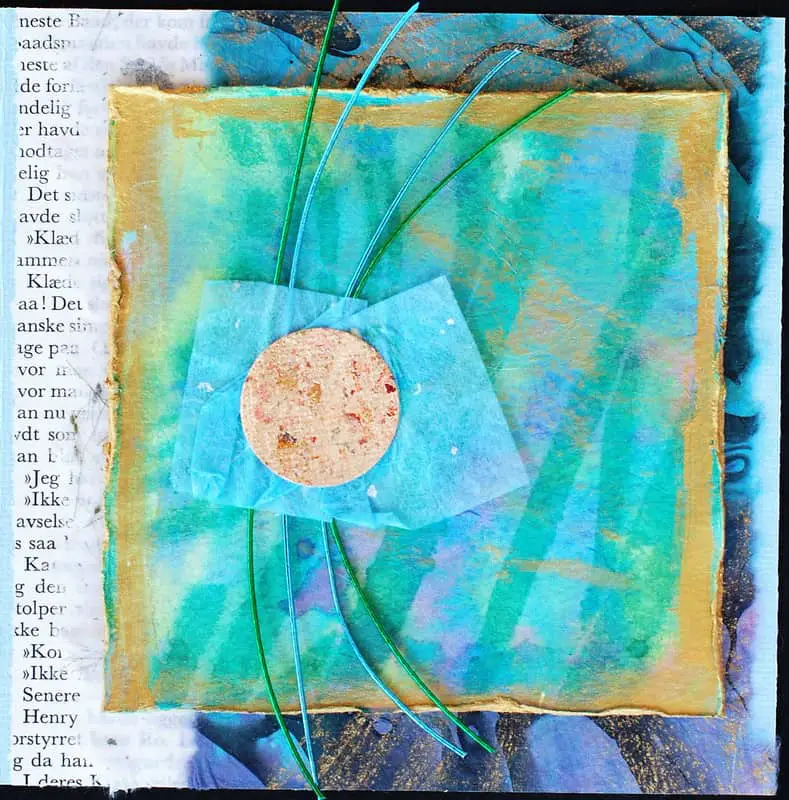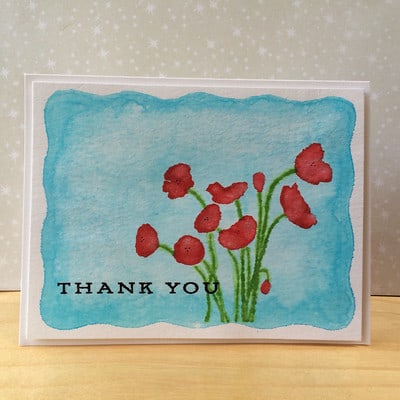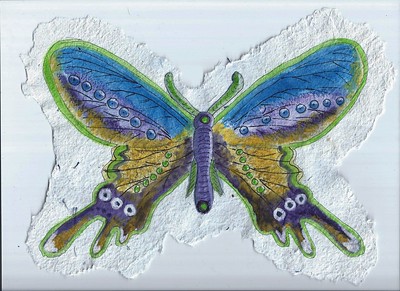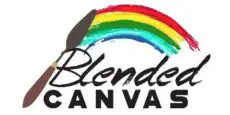Watercolor paints are a super easy way to achieve a semi-transparent design. To get the best results with watercolor paints, it is highly recommended to paint on watercolor paper. There are some instances however, when you don’t have watercolor paper on hand, or your design won’t work on it.
Watercolors can be used on many different paper surfaces, but will it work on Cardstock? You’re in luck, because watercolor can indeed be used on cardstock. You do however need to be careful and not get the paper too wet because this can damage the cardstock.
In this article we go over everything you need to know to successfully paint with watercolors on Cardstock paper. Let’s get to it!
How Do You Watercolor on Cardstock?

There is a trick that you can use to make sure that your watercolor painting turns out on cardstock paper. The first thing you need to do is prepare your paint. For the best result, it is recommended to use as little water as possible when mixing your paint.
My favorite and top pick is always Arteza Watercolor Paints. They have so many different colors, and the quality is amazing! I usually use Arteza Paints for all my projects.

It is best to create a very tiny pool of paint with your paintbrush and some water. You should then take another dry paintbrush to pick up the paint with. This will allow the paint to stick to the paintbrush without any additional water dripping down onto the paper.
The paintbrush you use is also very important when it comes to creating watercolor artwork. I use Transon Round Watercolor Brushes for my watercolor projects. I love that this set comes with 8 pieces and it includes detail brushes as well.

When you begin painting, it is very important to use very light brush strokes. Avoid pressing down on the paper. Your paint brush should just barely graze the paper. Fill in one very thin layer of your design with your color first. This will give you a base color to start building on.
After you have the larger part of your design colored in, you can go back and focus on the details. When you are working with details, it is important to make sure you only touch each piece of the design once with your paintbrush. Avoid excessive contact between the paintbrush and the paper.
Can You Use Watercolor on Kraft Paper?

Watercolor paper is white, and Kraft paper is brown, but can you use Kraft paper for watercolor paint? You absolutely can, but if you want your colors to be as vibrant as they would be on regular watercolor paper, you will need to utilize some white watercolor paint for a more opaque color.
I recommend this Brown Kraft Paper for your watercolor project. It comes with 50 sheets and it’s very durable with the thickness being 200 gsm (75 lb cover.)
Kraft paper is a mixed media paper, so you can use it for different crafts, including watercolor. While it is a mixed media paper, you should still use the minimum amount of water possible. The paper can stand up to the extra water, but the paint takes to the paper easier, so excess water isn’t necessary.
It is best to start with as little water as possible, then add more as needed. You might notice that you need some more water if your colors aren’t blending well on the Kraft paper. This will allow your painting to look as clean and neat as possible.
What Kind of Paint Can You Use on Cardstock?

In addition to watercolor paints, you can also use other types of paint on cardstock paper. Acrylic paint is by far one of the most popular paints, and it can definitely be used on cardstock paper. However, since acrylic paint dries so quickly, you don’t have a lot of time to fix mistakes on paper.
Luckily, there is a solution that can help you if you notice the acrylic paint dries too quickly for you. You can quickly coat the paper with an acrylic medium and let it dry. You can then paint on top of the medium because it will prevent the water in the paint from absorbing into the surface so fast.
You can also use spray paint on cardstock, which is just as easy as it sounds. If you want a simple, cute project that doesn’t take much effort, spray painting is a great option. You just need some painters tape to lay out your design, then you just spray the paint on and you’re done!
What Surface is Best for Watercolor?

When you are working with watercolor paints, the surface you work on is the most important thing to consider. The surface of the paper can make a world of difference with how your project turns out. There are so many types of paper, but which one is the best?
My top recommendation is Arteza Watercolor Paper. It’s very durable, heavyweight and designed for fine quality watercolor paints.

There are three main paper surfaces. The first is hot pressed, which is the smoothest paper. It is made using heated rollers to press the fibers down completely. This surface is for those who work with fine details in their painting. You will be left with a nice flat finish when using a hot pressed surface.
The second surface is cold pressed, which has a small amount of texture. It is made with cold rollers instead of hot to only press down some of the fibers. Cold pressed paper is usually the most popular for watercolor because it is versatile, more absorbent, and stays wet longer than hot pressed.
The third surface is called rough. Rough is the surface that is most textured with pits in the paper. This is perfect if you are looking to get the most granulation of your colors. Due to the textured surface, it is most suited for a loose painting style.

The weight of the paper is just as important as the surface and should also be taken into consideration when deciding which paper to use. Paper is either measured using pounds. Lightweight paper is going to be more affordable, but more fragile. Heavyweight paper will be able to hold more layers and stay sturdy.
A great choice for lightweight watercolor paper is Strathmore Paper. If you’re looking for a heavy set watercolor paper, then I recommend Arteza Heavyweight Paper.
When choosing which surface paper to purchase, you need to think about what your end goal for the painting is. If you want your piece to be extremely detailed, you will want a thick, hard pressed paper that can handle multiple layers of paint.
If you are going for a look that is less precise, you can opt for a paper with more texture to give your work more dimension. If you aren’t sure which one you want to use for your project, buy some small packs of each to test them out and see what works best for you.
How Do You Keep Watercolor Paper from Buckling?

It is frustrating when you work so hard on a watercolor painting just for the paper to end up buckling and warping when it dries. Luckily, there are a few things you can do to prevent your paper from buckling that are super easy.
The first thing you should do is try using as little water as possible. The wetter a piece of watercolor paper is, the more likely it is to buckle and curl up. Be careful with the amount of water you are using during your painting process.
You can also try using a heavier weight of paper. Heavier watercolor paper will be able to hold up to more what than a lightweight piece of watercolor paper. When you use a heavier paper, you will have a little more freedom with the amount of water you use.
It is also a good idea to grab some gesso and paint both sides of the paper before you start painting. Gesso is a primer, so it will make the paper heavier, and the paint will adhere to the surface easier. This will also help protect your painting from future water damage.
I highly recommend this Watercolor Gesso to prime your paper. It’s worked very well for me in the past.

If you aren’t planning on painting the entire paper, you can tape down the edges of your paper while you are working. The paper would need to stay taped during the painting and drying process, but it will result in a flat piece of paper.
Finally, you can let gravity do the work if you weren’t able to use any of the tips above. When your painting is completely dry, you can set a few heavy books on top of the paper and let it sit overnight. When you wake up in the morning, the painting will be completely flat without you needing to do anything.
Final Thoughts
When you are using watercolor paints, it is important to use the right kind of paper for the best results possible. While it is recommended to always use watercolor paper, you can also use Cardstock and Kraft paper as well.
There is a specific painting method when using watercolors on cardstock, and it includes using a very light hand and avoiding excess contact between the paintbrush and the paper. This will ensure you get the best results possible.
One of the biggest issues to overcome when using watercolor paints on watercolor paper is the buckling. Just remember to follow my tips and recommended products to ensure your watercolor painting comes out great, and doesn’t lead to buckling.
Don’t forget to check out my other articles for all your painting Q&A’s. Happy painting!

